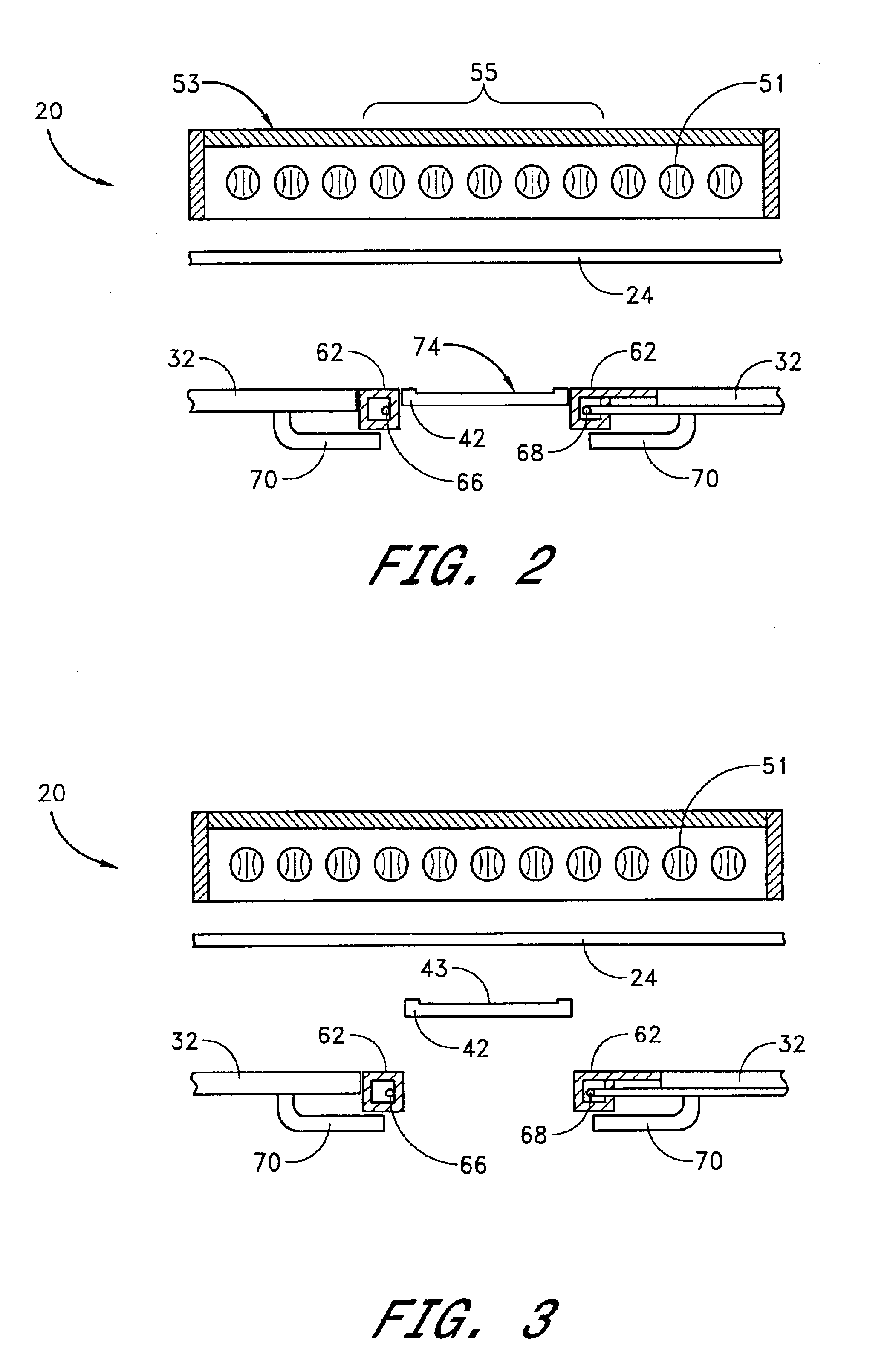Method of loading a wafer onto a wafer holder to reduce thermal shock
a technology of loading and wafers, applied in the field of processing wafers, can solve the problems of reducing the likelihood of wafer curling and persisting thermal shock, and achieve the effect of reducing the likelihood of thermal shock and greater temperature gradients
- Summary
- Abstract
- Description
- Claims
- Application Information
AI Technical Summary
Benefits of technology
Problems solved by technology
Method used
Image
Examples
Embodiment Construction
As explained above, prior art methods for preheating a wafer as it is loaded into a reaction chamber are often too slow to result in optimal throughput. On the other hand, direct loading of a cold wafer onto a hot wafer holder, while less time-consuming, can result in thermal shock. The present invention provides a middle ground between these avenues, resulting in optimal throughput while substantially preventing thermal shock.
The present invention includes methods of preheating and loading a semiconductor wafer onto a wafer holder inside a reaction chamber. FIG. 1 illustrates one type of reaction chamber within which a wafer can be loaded according to the invention. However, the skilled artisan will understand from the teachings herein that the methods of the invention can be employed for many different types of wafer holders and reaction chambers. The discussion herein should not be limited to one particular type of reaction chamber or wafer holder. Moreover, while illustrated in ...
PUM
| Property | Measurement | Unit |
|---|---|---|
| Temperature | aaaaa | aaaaa |
| Length | aaaaa | aaaaa |
| Fraction | aaaaa | aaaaa |
Abstract
Description
Claims
Application Information
 Login to View More
Login to View More - R&D
- Intellectual Property
- Life Sciences
- Materials
- Tech Scout
- Unparalleled Data Quality
- Higher Quality Content
- 60% Fewer Hallucinations
Browse by: Latest US Patents, China's latest patents, Technical Efficacy Thesaurus, Application Domain, Technology Topic, Popular Technical Reports.
© 2025 PatSnap. All rights reserved.Legal|Privacy policy|Modern Slavery Act Transparency Statement|Sitemap|About US| Contact US: help@patsnap.com



